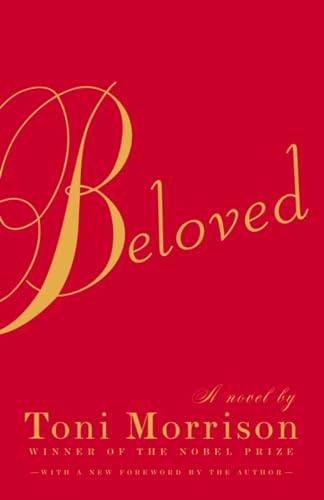Alright folks, buckle up! Here comes my review of Toni Morrison. I first picked up one of her books thinking it would be a breezy afternoon read, but let me tell you, it took me on a whirlwind faster than my grandma on Black Friday. From ghosts popping up at dinner to families doing their best in the messiest situations, Morrison’s stories have it all. I played book club referee for my friends, and trust me—this author knows how to get people talking (and sometimes arguing). This review sums up the wild ride, the good, the complicated, and the oh-so-spooky. Ready? Let’s get into it!
Book Review: Toni Morrison
In a nutsheel
Toni Morrison, a legend in American literature, gives us stories that stick. Her books land smack in the middle of the literary fiction world, but don’t let that scare you off. These are books about real people with real problems. You get history, drama, and family chaos—sometimes all on the same page.
Morrison writes a lot about identity, memory, and how the past just won’t let folks go. Her characters wrestle with big stuff, like love, loss, and being part of a community (or not). There’s mystery and sometimes a bit of magic, but it’s the kind that makes you wonder if your own house is haunted by history. If you want a book that makes you think, laugh awkwardly, and maybe call your mom, you’re in the right spot.
How Slavery Shapes Every Corner of Character’s Lives in Toni Morrison’s Novels
Slavery is like that jar of pickled onions in your uncle’s fridge. You don’t want it, but it keeps popping up, and you can never quite get rid of the smell. Toni Morrison knows this. Boy, does she know this. In her books—especially in Beloved—slavery is not just a dark bit of history. It’s the big, hairy spider sitting on the ceiling that everyone pretends not to see, but it changes the whole room anyway.
Morrison’s characters carry scars, sometimes on their backs, often in their hearts. Sethe, for example, is haunted by what she did to keep her child from being dragged back into slavery. It sticks with her like a piece of spinach between your teeth. And it doesn’t just affect Sethe. The whole community seems shaped by this shared pain. It’s like the world’s worst family heirloom, handed down in stories, habits, and even silence. The way people love, hate, or trust—it all links back to what slavery did to them and their families.
Even when they try to move on, something always pulls them back. Morrison never lets her characters (or us) forget that the past is still hanging around like a bad smell. Sometimes I had to put the book down and grab a snack, because wow, it can get heavy. That said, Morrison’s ability to show how history seeps into daily life? Pretty incredible.
And just when you think you’ve got a handle on all this pain, Morrison tosses in some supernatural twists. Next up, let’s chat about ghosts, magic, and what they really mean in her stories—hold onto your hats!
Supernatural Elements and Their Symbolism in Toni Morrison’s Novels
If you have ever read a Toni Morrison book, you might have noticed things get a little spooky sometimes. I mean, I once got lost in Beloved for hours, and not just because I can barely read without snacks. Morrison brings ghosts, visions, and spirits right into everyday life, making the stories feel both real and magical. The best example is Sethe’s haunted house in Beloved—I’d move out faster than you can say “boo!” but the characters stick around. Why? Because the ghost isn’t just a ghost. It’s the past refusing to leave, making everyone deal with old wounds.
The supernatural in Morrison’s books is more than a cheap scare. It symbolizes memory, pain, and history. The magical parts force the characters—and us, the snack-munching readers—to face hard truths. Sometimes, the spirits are stand-ins for real life problems that just won’t quit. For example, in Song of Solomon, the flying thing is not just magic. It hints at freedom, dreams, and the ways people long to escape. Morrison makes the unreal feel real, and I found myself wondering if my cat was actually a ghost when reading late at night.
So, Morrison uses supernatural stuff not to make us scream (unless you’re easily startled like me) but to show the deeper issues people face. The magic is a tool for truth-telling, and I have to admit, it works. Just wait until we talk about motherhood and family—grab your tissues, because things get even more wild from here!
Motherhood and Family Relationships in Toni Morrison’s Stories
I have to say, few writers I’ve read do motherhood quite like Toni Morrison. I mean, her books dig in deep—sometimes so deep I have to stop, take a breath, and remember to call my own mother. Morrison doesn’t give us cookie-cutter TV moms. Nope! Her mothers are complex, stubborn, loving, flawed, and sometimes downright scary. Think of Sethe in Beloved, willing to do anything, and I mean anything, to protect her children from slavery. That is love with a whole lot of teeth.
Morrison’s families are not your picture-perfect, everyone-laughing-at-the-dinner-table type either. They’re messy, full of secrets, grief, and sometimes hope. Sula and Nel from Sula show us that family is not just who you share a roof with, but who you share your heart and history with (even if you fight a lot).
And let me tell you, Morrison gets sibling rivalry with a capital R. In Song of Solomon, Milkman and his sisters have issues that make my own sibling squabbles look like a tea party. These are families shaped by trauma, history, and a longing for something better. Half of the time, I wanted to reach into the pages and give everyone a snack and a nap.
Still, Morrison shows that even in a world stacked against them, her characters reach for love, forgiveness, and connection. She keeps it real—there’s pain, but a chance for healing too. And if you think her stories are just about families, wait until you see how she messes with language itself. Next up, I’ll talk about Morrison’s wild writing style and the way she twists narrative structure into knots that actually make sense!
Writing Style and Narrative Structure in Toni Morrison’s Novels
Let me tell you, reading Toni Morrison is like eating soup with a fork: it’s tricky at first, but oh boy, it’s worth the mess! Morrison’s writing style is unlike anything I’ve seen. Her sentences dance all over the page. Sometimes they tiptoe; sometimes they stomp. She is not afraid to twist words and juggle timelines, which keeps you guessing and, honestly, keeps caffeine sales up in my house.
The way Morrison tells a story can be a bit of a puzzle. She jumps around in time, switching between past, present, and future like she forgot where she put her car keys. But this isn’t just for show. Her mixed-up timelines help you see each character’s life from every angle, and by the time you finish, it feels like you’ve built the story yourself. Kind of like IKEA, but with fewer screws left over at the end.
Morrison’s use of language is beautiful, but sometimes hard. She uses lots of symbols and layers, which made me feel smart one minute and confused the next. Sometimes I had to reread a page or two (or five). But I promise, the work pays off. You get caught up in her beautiful wordplay, and when the pieces click together, it’s magic.
So, do I recommend reading Morrison? That’s a big YES! Just keep snacks—and a notebook for all those ‘Aha!’ moments—handy.
Conclusion
Well folks, that wraps up my review of Toni Morrison’s wild and wonderful world! Her books will pull your heartstrings, twist your brain, and maybe even spook you a little. Great stories, deep characters, and some magic to keep you guessing. But, heads up—the writing can be tricky, and the heavy topics are not for a lazy Sunday read. Still, if you’re ready to work those brain muscles and maybe cry in public, Morrison is your ticket. Thanks for sticking with me—now go impress your book club!


